This discussion paper is designed to help Community Development Financial Institutions (CDFIs) define and measure job quality. It defines a quality job as one that contains most (if not all) of five elements: a living wage, basic benefits, career-building opportunities, wealth-building opportunities, and a fair and engaging workplace. The paper offers impact measurement practices to assess and report on job quality to help CDFIs encourage and support their business borrowers to enhance the quality of jobs they offer. While this resource is written for lenders, it has applications for all practitioners seeking to define and measure job quality within a firm.
Central to effective employee ownership is active, genuine engagement of employees in workplace decision making. This guide from the Democracy at Work Institute provides an overview of the pillars that cooperatives should center when framing an engagement plan. Brief examples are provided, as well as links to further information.
Traditional economic development focused on attracting large companies promising many jobs has left behind many people in communities across the country, including working people, low-income individuals and families, people of color and immigrants. But some communities have taken a different approach, one that embraces and cultivates local assets and ownership and that empowers traditionally excluded communities.
This event explores the approaches these communities have taken, including alternative business ownership models, leveraging the purchasing power of large public and nonprofit institutions to bolster communities, robust workforce development, more equitable infrastructure development, and more. Panelists discuss how inclusive economic development cultivates economic opportunity and quality jobs for community residents.
This visual guide illustrates how different forms of ownership are structured. The resource focuses on two primary approaches to employee ownership: worker cooperatives and employee stock ownership plans. Using diagrams, the resource compares employee ownership structures to conventional, privately held companies. The guide also includes a visual depiction of potential benefits of business ownership for worker owners related to factors including profitability and decision-making. Topics mentioned include profits, governance, management, and types of control. Employers, policymakers and stakeholders working with businesses or workers interested in employee ownership may find this brief, visual guide useful in understanding employee ownership structures and their potential benefits.
This is a framework for helping business owners understand three main ways to transition a business to employee ownership: worker cooperatives, employee stock ownership plans (ESOPs), and management buy-outs. This tool may also be used by practitioners who work with businesses — especially small businesses — to increase awareness of employee ownership as a tool for transitioning businesses as owners retire. It can also help inform employees seeking to join or push for values-based workplaces.
This guide explores worker cooperative networks as a neighborhood, municipal and regional strategy for generating wealth. Drawing from two cases, the authors put forth a framework for building a scalable cooperative network in post-industrial American cities. This guide may be useful to practitioners learning about cooperative business models or exploring strategies to spread worker ownership.
If a business owner is retiring or leaving the organization, transitioning to employee ownership is one avenue to sustain the business and workers’ jobs while strengthening job quality. This highly technical guide provides information for owners interested in selling their business to employees through an ESOP or co-op. Included are details about conducting a landscape analysis, legal rights, tax policy, and valuation of your business.
This article includes information and approaches for developing ownership cultures that align employee and company interests. Practices discussed can be applied across a range of different ownership structures and draw from the authors’ personal experiences as well as case studies to highlight practical considerations for implementing employee ownership structures. Businesses and business support organizations who are implementing or exploring employee ownership structures may find this resource particularly useful.
Cooperative Home Care Associates (CHCA) is a worker-owned cooperative and employer-based training program that provides home health aide services in New York City’s South Bronx and Northern Manhattan. The cooperative was launched in 1985 as part of a strategy to improve the low-wage occupation of the home health aide. This case study documents the organization’s evolving approach to operating as part of the home health industry, noting its strategies and accomplishments in the areas of improving the quality of jobs, developing career ladders, influencing industry practice and effecting policy change. Details on the organization’s operations and approach to training are also provided.
This is a high-level, generalist guide for starting a worker cooperative or transitioning an existing business. In addition to providing an overview of the principles and function of cooperative ownership, the guide provides an explainer on developing business ideas and decision-making processes. This guide is useful to workers, advocates, and those engaged in outreach to existing values-based employers.
